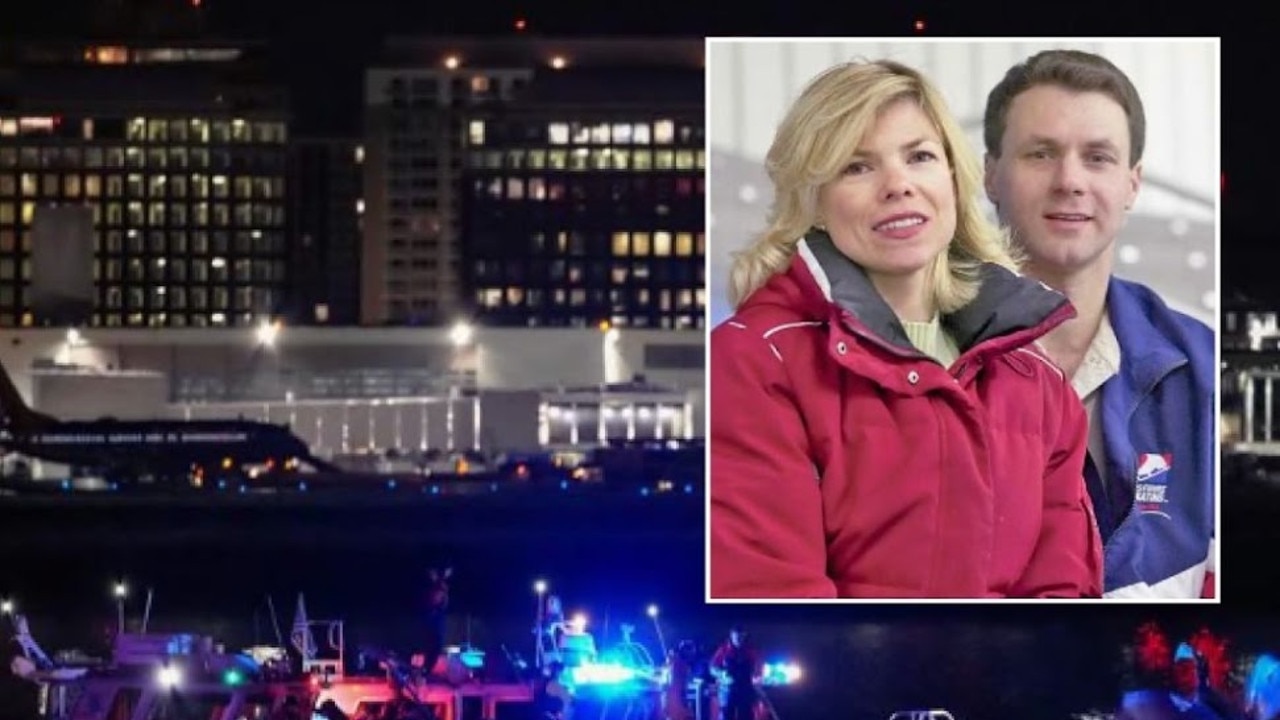Nearly 400 cops at Uvalde mass shooting ‘failed to prioritise saving lives over own safety’: panel
A preliminary report has slammed a series of failures by multiple law enforcement agencies during their response to the mass shooting at Robb Elementary School in Uvalde, Texas.
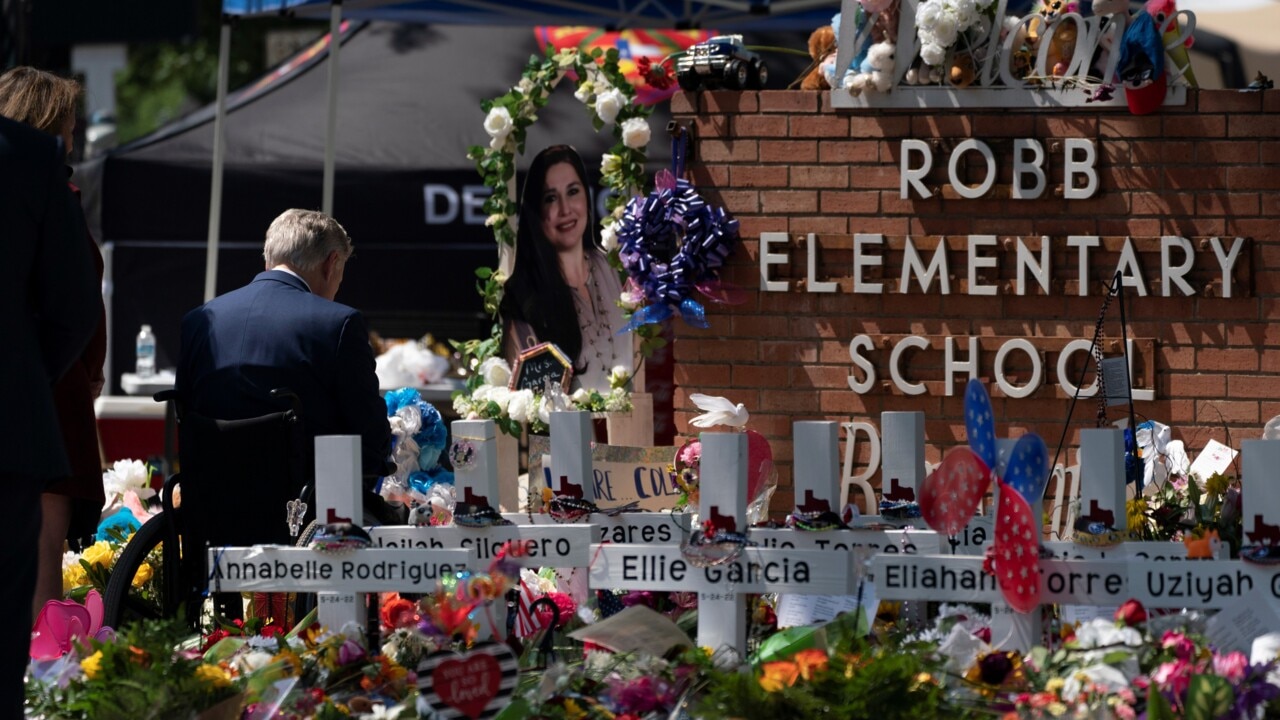
News
Don't miss out on the headlines from News. Followed categories will be added to My News.
Nearly 400 law-enforcement officers responded to the scene of the Uvalde school massacre, but their “overall lackadaisical approach” meant the gunman wasn’t confronted for more than an hour — helping him slaughter 19 fourth-graders and two teachers, a scathing new probe says.
According to the New York Post, in one outrageous finding by the special Texas House panel investigating the deadly debacle, the local chief schools cop “wasted” a “precious” 40 minutes searching for a key to a room with dying children inside — when it’s “very likely” that the door wasn’t even locked, probers said.
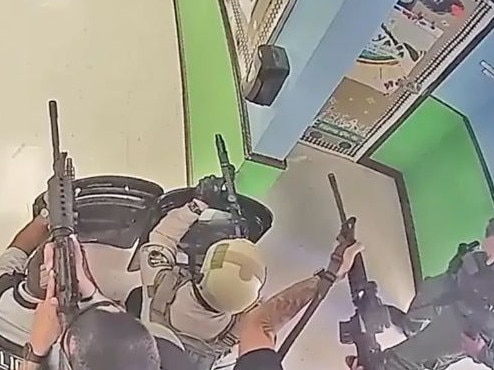
“At Robb Elementary, law enforcement responders failed to adhere to their active shooter training, and they failed to prioritise saving innocent lives over their own safety,” the report said.
Responding to the May 24 mass-shooting scene in the Texas town were 376 law-enforcement personnel: 149 Border Patrol officers; 91 members of the state Department of Public Safety; 14 from the Department of Homeland Security; 25 from the Uvalde Police Department; 16 from the San Antonio Police Department and another 16 from the Uvalde County Sheriff’s Office, according to the report released on Sunday, local time.
Yet the army of law enforcement was part of “systemic failures and egregious poor decision making” contributing to the tragic debacle, probers said.
“In this crisis, no responder seized the initiative to establish an incident command post,” the report said.
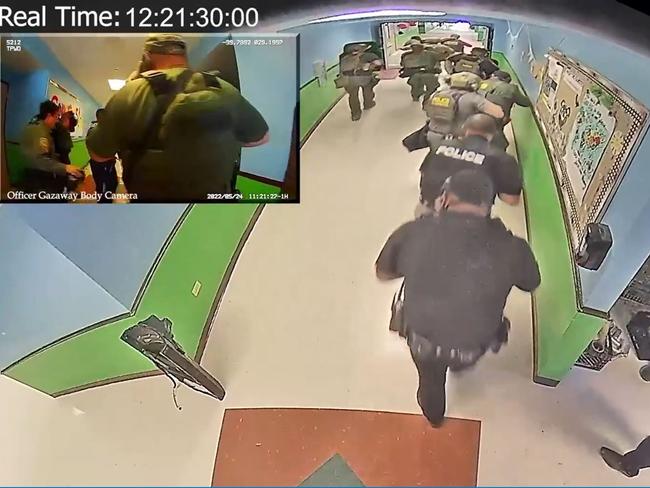
“Despite an obvious atmosphere of chaos, the ranking officers of other responding agencies did not approach the Uvalde [school district] chief of police or anyone else perceived to be in command to point out the lack of and need for a command post, or to offer that specific assistance,” the report said.
“In this sense, the entirety of law enforcement and its training, preparation, and response shares systemic responsibility for many missed opportunities on that tragic day.”
The report noted that at least one Uvalde cop had heard the 911 calls coming from inside the classroom and knew gravely injured students were trapped inside.
“It is likely that most of the deceased victims perished immediately during the attacker’s initial barrage of gunfire. However, given the information known about victims who survived through the time of the breach and who later died on the way to the hospital, it is plausible that some victims could have survived if they had not had to wait 73 additional minutes for rescue,” the report said.

The probe also raised more questions about whether the door of the classroom Ramos stormed was locked and why the police focused so much on finding a key.
“An offsite overall incident commander may have suggested checking to see if officers could open the door without a key — in hindsight, they probably could have,” the report said.
School officials also had master keys, including the principal, but cops never asked her for one to the door, the report noted.
Finding a key became the “primary focus” of school-district Police Chief Pete Arredondo for 40 minutes, when guidelines for cops say that in the event of not being able to find a crucial key, responders “should use another technique to enter the area without delay,” the report said.
“But nobody ever checked the doors of Rooms 111 or 112 to confirm they were actually locked or secured,” the report said. “Room 111 probably was not. Chief Arredondo’s search for a key consumed his attention and wasted precious time, delaying the breach of the classrooms.”
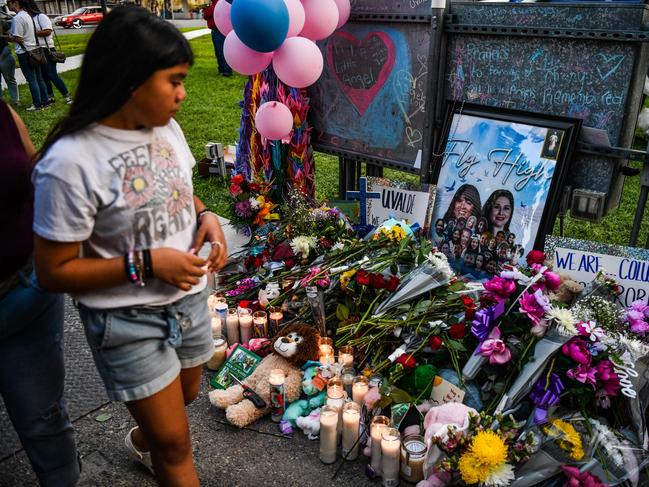
The chairman of the Texas House committee, Dustin Burrows, said at a press conference Sunday, “There were officers who knew or should have known more should have been done.
“If they didn’t take over command, they should have at the very least offered support and guidance.”
The House panel said there will be other “investigative arms” looking into why police didn’t act sooner to take out the shooter and “who knew what, when.”
Vincent Salazar, the grandfather of slain 11-year-old Layla Salazar, told The Associated Press of the first-responders Sunday, “It’s a joke.
“They’re a joke. They’ve got no business wearing a badge. None of them do.”
The findings also describe a series of “shortcomings and failures of the Uvalde Consolidated Independent School District and of various agencies and officers of law enforcement,” although the only “villain” the committee found was the shooter himself.
“There is no one to whom we can attribute malice or ill motives. Instead, we found systemic failures and egregious poor decision making,” the report says.
The report surfaced as the families of the slaughter’s victims were told the acting police chief of Uvalde has been suspended.
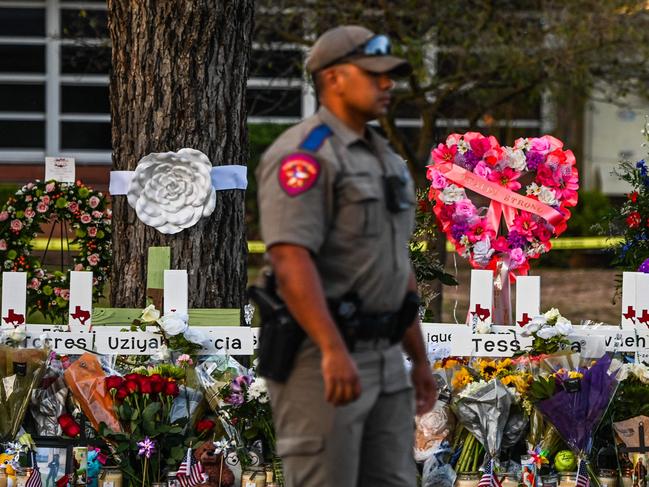
Uvalde Mayor Don McLaughlin shared news of the chief’s suspension on Sunday with the families during a meeting between them and the investigatory committee.
Suspended Lt. Mariano Pargas was Uvalde Police Department’s top-ranking official on the day of the massacre.
The House panel’s probe, which was in the works for about a month, included testimony from about 40 people, including school staff, the district superintendent, members of the Texas Department of Public Safety and the school district’s police chief.
While anger over authorities’ response to the shooting has largely been centred on local police, the committee found that the school district and state and federal law enforcement were to blame, too.
Staff at Robb Elementary School flouted their own safety guidelines put into place to protect against shooters by leaving doors regularly unlocked or propped open because of a shortage of keys, the report said.
Even more alarming, “the school district did not treat the maintenance of doors and locks with appropriate urgency,” investigators found, adding that “staff and students widely knew the door to one of the victimised classrooms … was ordinarily unsecured and accessible.
“Robb Elementary had a culture of noncompliance with safety policies requiring doors to be kept locked, which turned out to be fatal,” investigators said.
The school also had a shoddy Wi-Fi system, which impacted access to an app that’s used to notify staffers of emergencies in and around the building, the panel noted.
When emergency alerts were issued over the app, workers at the school frequently lacked a sense of urgency because of the frequency of such emergencies over the school’s proximity to the Mexican border, the committee said.
The school’s 5-foot fence also was “inadequate to meaningfully impede an intruder,” the report said.
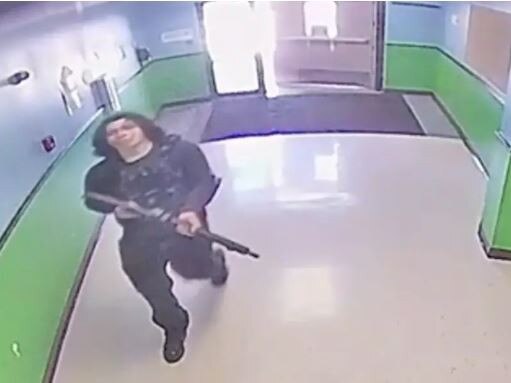
The finding also revealed more key details about Ramos’ upbringing and what factors led him down such a “dark path.”
Ramos’ mother, referred to as “A.R.” in the investigation, had a history of drug abuse and had two misdemeanours, one for theft and another for a family-violence assault. His father was largely absent from his life.
As students returned to in-person learning after the Covid-19 lockdown, Ramos dropped out of school, the report said. By age 17, he had only completed freshman year of high school and suffered poor grades. He also had an eating disorder, his own notes revealed.
“An ex-boyfriend of his mother A.R. described the attacker to an investigating Texas Ranger as a loner who punched holes in the walls of his room after arguments with her,” the report said.
With no driver’s license or car, he was left alone and spent much of his time online and playing violent video games.
It was during this time that Ramos “began to demonstrate interest in gore and violent sex, watching and sometimes sharing gruesome videos and images of suicides, beheadings, accidents, and … sending unexpected explicit messages to others online,” the report detailed.
Most chilling, he became obsessed with school shootings. On the French streaming platform Yubo, online friends called him “Yubo’s school shooter.
“Those with whom he played games taunted him with a similar nickname so often that it became a running joke,” the report said.
“Even those he personally knew in his local chat group began calling him ‘the school shooter.’”
More Coverage
Originally published as Nearly 400 cops at Uvalde mass shooting ‘failed to prioritise saving lives over own safety’: panel



